Constellation Ursa Major (Ursa Major)
The constellation Ursa Major (Ursa Major) is seven particularly spectacular stars that are easy to find in the sky. These are stars of the second magnitude (the least one is the upper left star of the “bucket”). Excluding these stars, there are 125 more stars in the constellation brighter than the 6th magnitude.
The size of the constellation Ursa Major
Constellation Ursa Major captures an area of 1280 square degrees in the sky - this is one of the most major constellations. The size of the constellation significantly exceeds the boundaries of the "bucket with a handle." Measurements revealed, for example, that the stars of the “bucket” are located at rather unequal distances from us: the nearest star (Aliot) is 50 light-years away from us, and the most distant (Benetnash) is 4 times more. Near the star Mizar (which means “horse” in Arabic) is an almost imperceptible asterisk Alkor (“rider”) of approximately the fifth magnitude.
Ursa Major in astronomy
For beginners-lovers of astronomy, Ursa Major can serve as a special "training ground":
this constellation, as a starting point, as a guide, makes it possible to search for numerous other constellations;
very clearly shows the apparent diurnal rotation of the sky and the rearrangement of the view starry sky during a year;
having remembered the angular distances between the stars of the "bucket", it is possible to carry out approximate angular measurements;
amateur astronomers who have a barely perceptible telescope can view double and variable stars inaccessible to the naked eye in the constellation Ursa Major and even distinguish some galaxies (including the famous "exploding galaxy" M82.
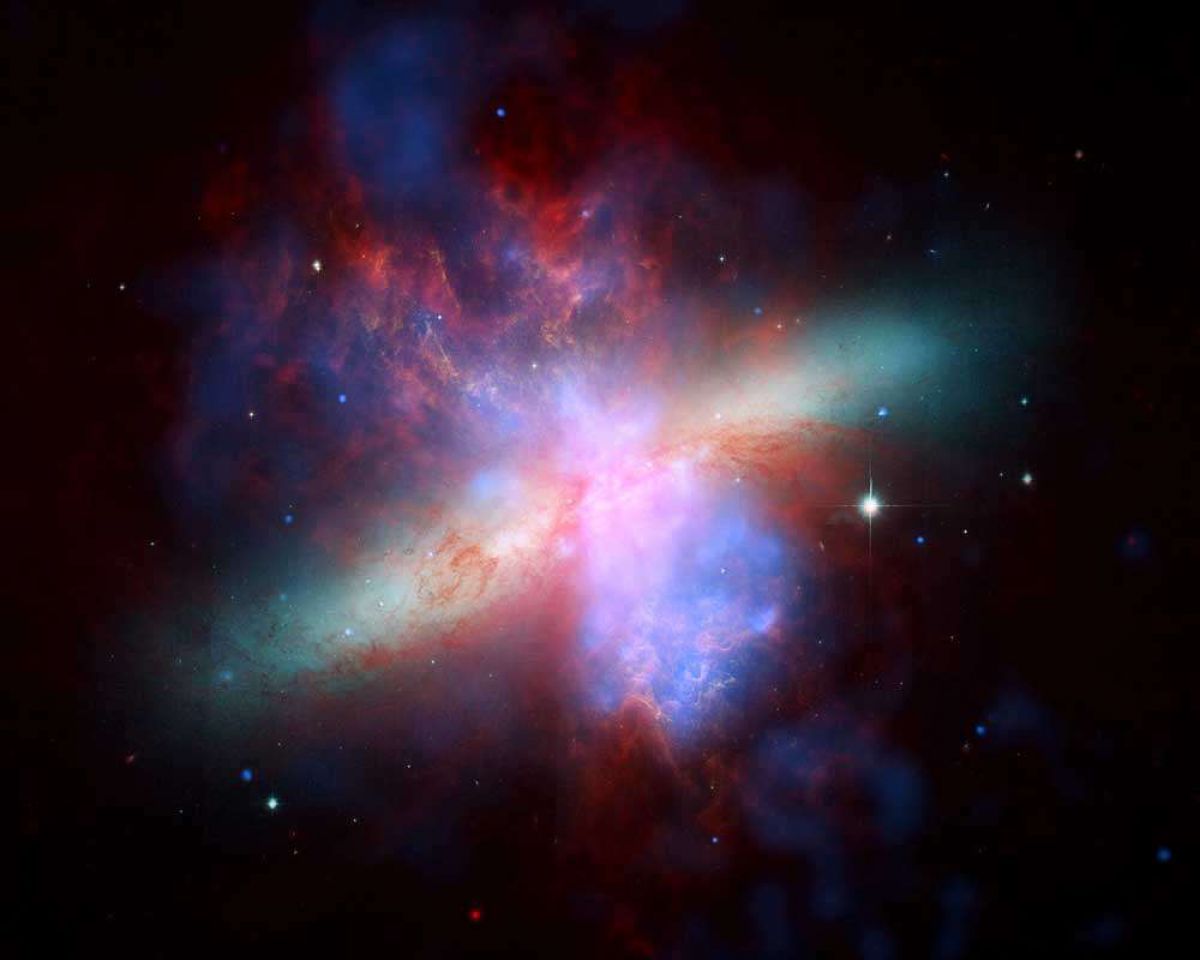 Constellation Ursa Major: myths and legends
Constellation Ursa Major: myths and legends
The constellation "bucket" has been known to people since ancient times. The ancient Greeks believed that constellation Ursa Major- this is the nymph Callisto, companion of Artemis, beloved of Zeus. But one day she incurred the disgrace of the goddess, transgressing the rules carried out by the companions of Artemis. And she turned her into a bear and set dogs on her. To protect his beloved, Zeus had to raise her to heaven.
Be that as it may, this event is dark: perhaps Zeus himself, hiding his own betrayals from the jealous wife of Hera, turned Callisto into a bear, and Artemis organized a hunt for her, either by mistake, or by teaching the far-sighted and vengeful Hera. Perhaps, in the end, that Hera, for the sake of revenge, herself turned Callisto into a constellation, and Callisto's son Arkad arranged a hunt for her by mistake. From time to time, some unknown girlfriend of Callisto, who at the same time turned into Ursa Minor, is also involved in this story.
Another myth, described by Philemon, tells that the baby Zeus was forced to reincarnate into a snake, and turn his nannies into bears, when his father Cron was looking for him, in order to, according to his habit, eat the newborn. From this place, Ursa Major and Ursa Minor and the constellation Serpent came from. The constellation Serpent is not in the sky, probably - this is the Dragon. This is similar to the close location of all three constellations. However, this myth is possibly just a poetic fantasy.
Constellation Ursa Major on the constellation map
Ursa Major can be admired during the day. This can easily be done by finding it on one of the interactive constellation maps. On the maps, you can find other large and small constellations and look at them in a big approximation. All in your hands!
known to people since antiquity. For example, the ancient Greeks believed that the constellation Ursa Major is the nymph Callisto, the companion of Artemis, the beloved of Zeus. But one day she incurred the wrath of the goddess by violating the rules imposed on the companions of Artemis. And she turned her into a bear and set dogs on her.
Legend
To save his beloved, Zeus was forced to take her to heaven. However, the story is dark: perhaps Zeus himself, hiding his betrayals from the jealous wife of Hera, turned Callisto into a bear, and Artemis arranged a hunt for her, either by mistake, or at the instigation of the far-sighted and vindictive Hera. It is possible, finally, that Hera, for the sake of revenge, herself turned Callisto into a constellation, and Callisto's son Arkad arranged a hunt for her by mistake. Sometimes some unknown girlfriend of Callisto, who at the same time turned into Ursa Minor, is also woven into this story. Another myth, told by Philemon, tells that the baby Zeus was forced to turn into a snake, and turn his nannies into bears, when his father Kron was looking for him, in order to, according to his habit, eat the newborn. This is where Ursa Major and Ursa Minor and the constellation Serpent came from. The constellation Serpent is not in the sky, probably - this is the Dragon. This is similar to the proximity of all three constellations. However, this myth seems to be just a poetic invention of a comedian.
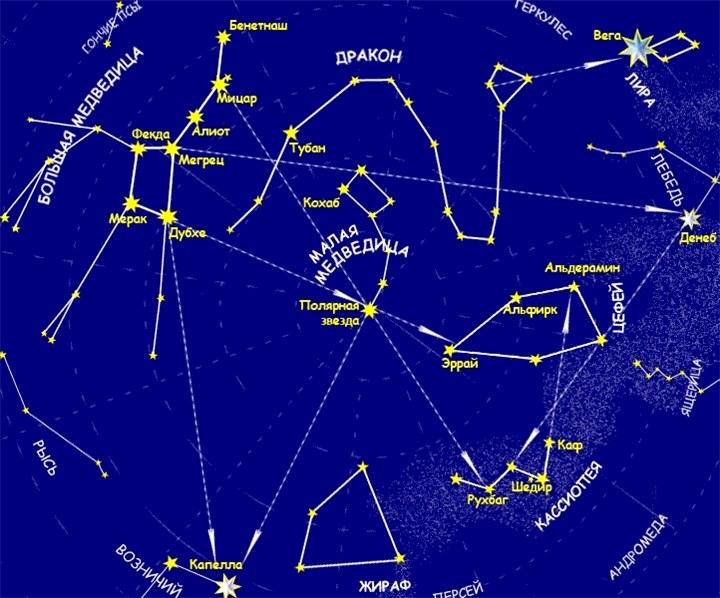
In the middle latitudes, Ursa Major is one of the non-setting constellations.
Ursa Major on the star map
(area = 1280 square degrees)seven most bright stars this constellation ("bucket with a handle") is easily found in the sky by everyone. These are stars of the 2nd magnitude (only one is weaker - the upper left star of the "bucket"). In addition to them, in the constellation there are 125 more stars brighter than the 6th magnitude. The boundaries of the constellation go far beyond the "bucket with a handle." The constellation Ursa Major - occupies an area of 1280 square degrees in the sky - one of the largest constellations. Measurements showed, for example, that the "bucket" stars are at very different distances from us: the nearest one (Aliot) is 50 light-years away from us, and the distance to the most distant one (Benetnash) is four times greater. Near the star Mizar (which means "horse" in Arabic), people with good eyesight see a faint star Alcor ("rider") of about 5th magnitude.
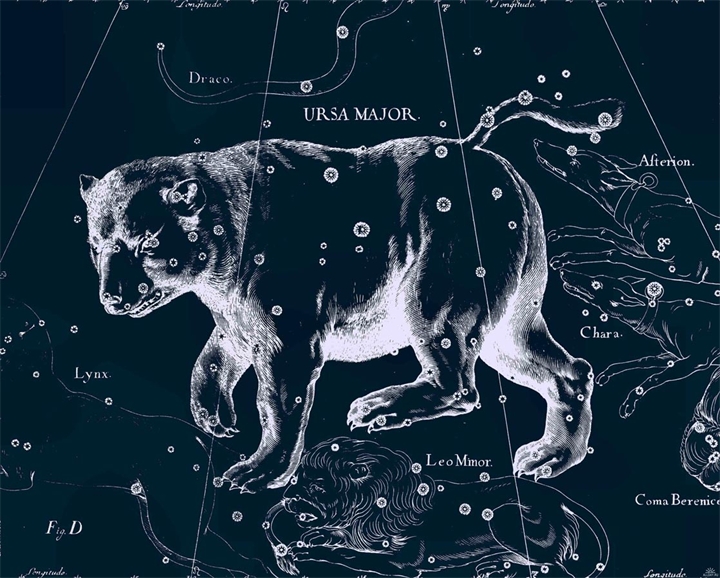
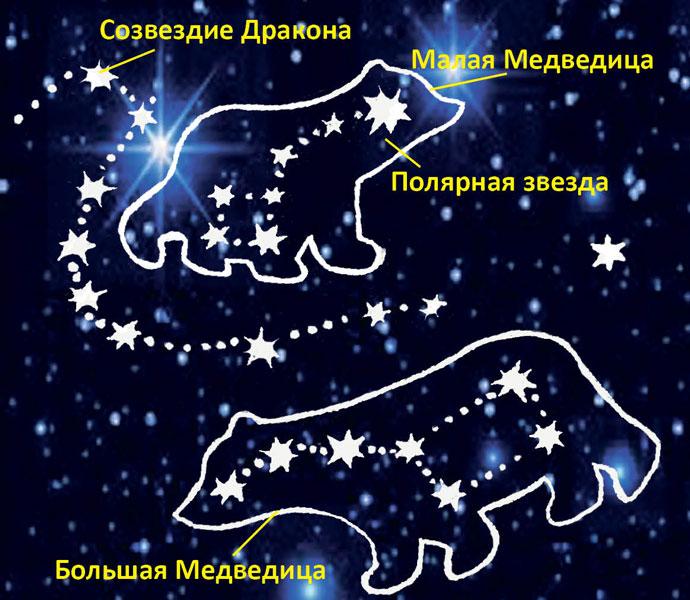
For beginner astronomy lovers, the Big Dipper can serve as a kind of "training ground": firstly, this constellation, as a starting point, as a guide, allows you to find many other constellations; secondly, it very clearly demonstrates the visible daily rotation of the sky and the change in the appearance of the starry sky during the year; thirdly, having memorized the angular distances between the "ladle" stars, one can perform approximate angular measurements; finally, amateur astronomers who have a small telescope at their disposal can observe double and variable stars inaccessible to the naked eye in the constellation Ursa Major and even see some galaxies (including the famous "exploding galaxy" M82).
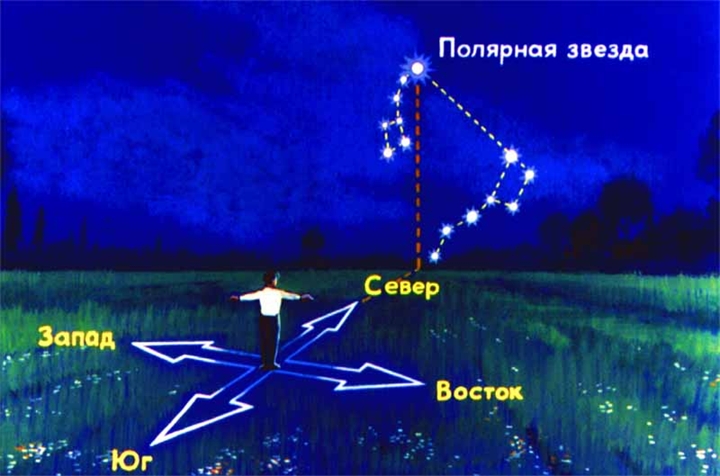
Constellation Ursa Major
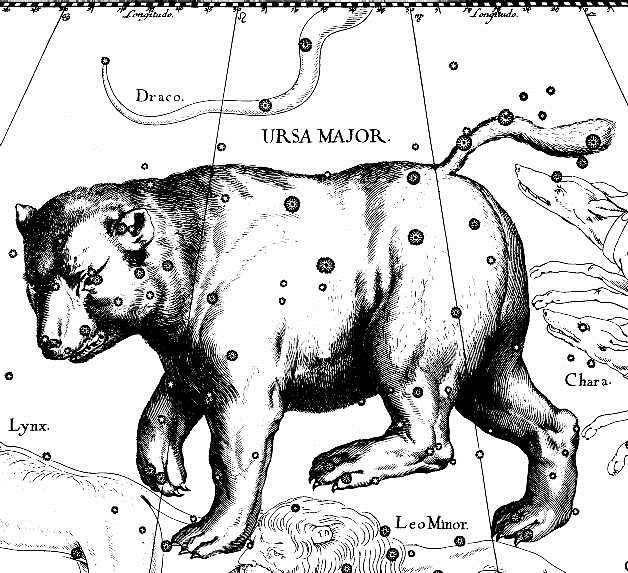
star formation
in the galaxy M82 is proceeding at a powerful pace - the birth (and death) of massive stars in it occurs about ten times faster than in our Milky Way. Winds from massive stars and supernova explosions created a huge cloud of gas emanating from this remarkable explosive galaxy. For the last billion years, two giant galaxies M82 and M81 have been waging a gravitational duel. The gravitational pull of each galaxy has a powerful effect on the other during close transits that occur every hundred million years. On its last approach, M82's gravity caused density waves to propagate around M81, resulting in M81's beautiful spiral arms. In turn, M81 in M82 initiated violent star formation and the formation of colliding gas clouds with such high energy that the galaxy glows in X-rays.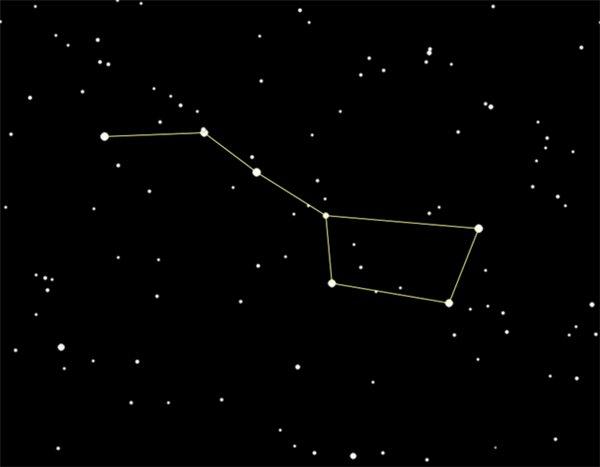
In a few billion years, only one of the two galaxies will remain. M81 itself, also referred to as NGC 3031, is one of the brightest galaxies in the sky. In this galaxy, the second most powerful supernova of the present time SN 1993J (the flash was observed on March 28, 1993), which could be observed from Earth, broke out. The star SN 1993J is included in dual system and after the explosion left a surviving huge satellite star in its orbit. Astronomers study the remnant of SN 1993J using a companion star. scientists have long sought to detect a neutron stellar or black hole forming in real time. Supernovae are the main sources of heavy elements in the Universe and play an important role in the evolution of galaxies. Supernova SN 1993J, which initially seemed quite ordinary, puzzled scientists a lot when it turned out that its ejection was too rich in helium, and instead of gradually fading, the explosion products began to increase in brightness in a strange way. Astronomers guessed that an ordinary red supergiant star could not turn into such an unusual supernova. Then there was an assumption that the flared supergiant was paired with another star, the gravity of which shredded the outer shell of the dying neighbor shortly before the explosion.
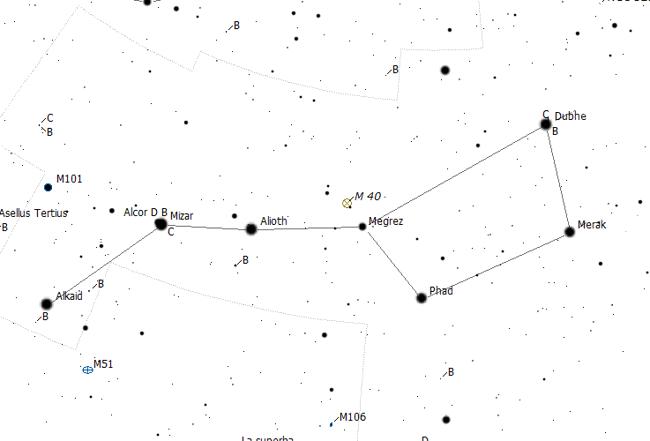
Archival images of the M81 galaxy before the supernova explosion showed a red supergiant star, which subsequently exploded as SN 1993J. During the 250 years before the explosion of SN 1993J, about 10 solar masses of gas were blown off the surface of the red supergiant by its companion, which in the future should also become a supernova with the formation of a neutron star or black hole. The galaxy is comparable in size to milky way. A careful study of the variable stars M81 made it possible to very accurately determine the distance to the galaxy - it turned out to be equal to 11.8 million light years.
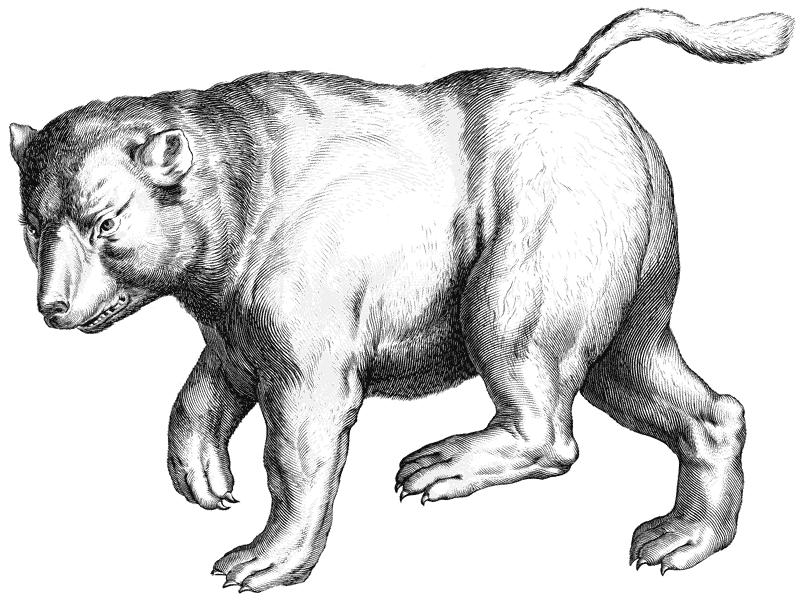
Data
With an area of 1280 square degrees, it is in third place in terms of size. Covers the second quadrant in the northern hemisphere (NQ2). Can be found in latitudes from +90° to -30°. Adjacent to Bootes, Giraffe, Veronica's Hair, Dragon, Lion, Lesser Lion, Hounds and Lynx.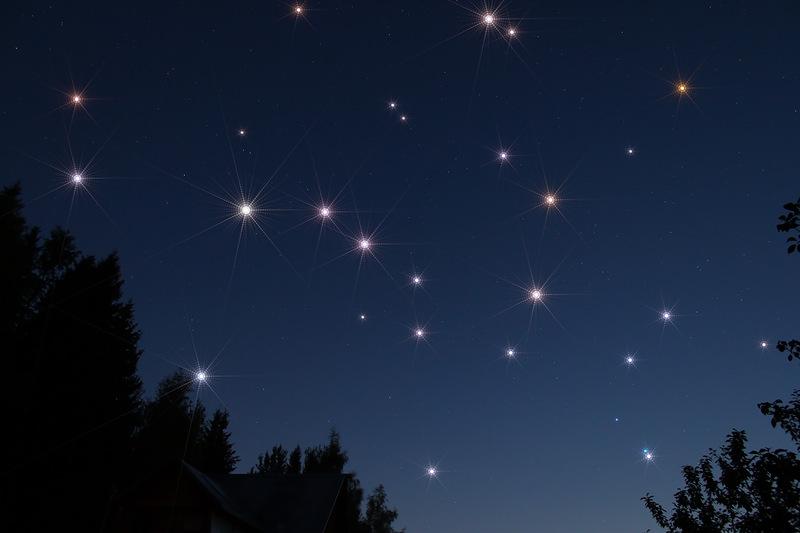
It contains 7 Messier objects: Messier 40, Messier 81 (NGC 3031), Messier 82 (NGC 3034), Messier 97 (NGC 3587), Messier 101 (NGC 5457), Messier 108 (NGC 3556) and Messier 109 (NGC 3992).
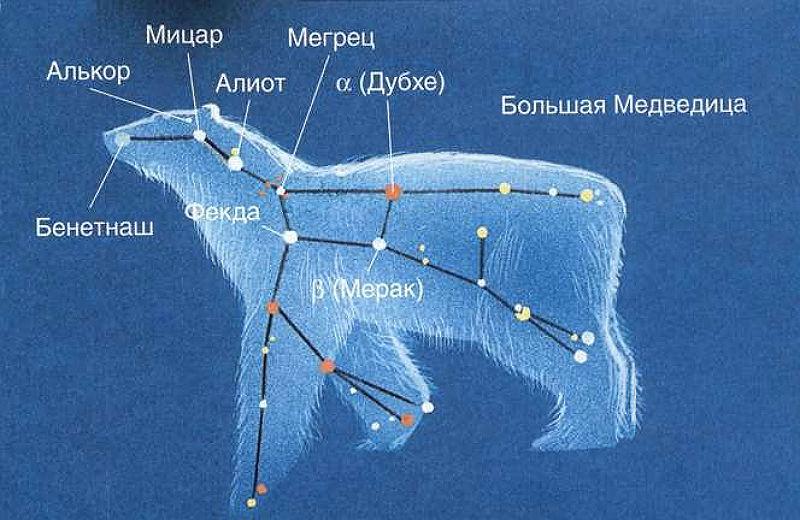
Also contains 13 stars with planets. The brightest is Epsilon Ursa Major, whose apparent magnitude reaches 1.76. There are two meteor showers: Alpha Ursa Majorids and Leonids-Ursids. Included in the Ursa Major group along with Bootes, Giraffe, Hounds, Veronica's Hair, Dragon, Lesser Lion, Lynx, Ursa Minor and North Crown.
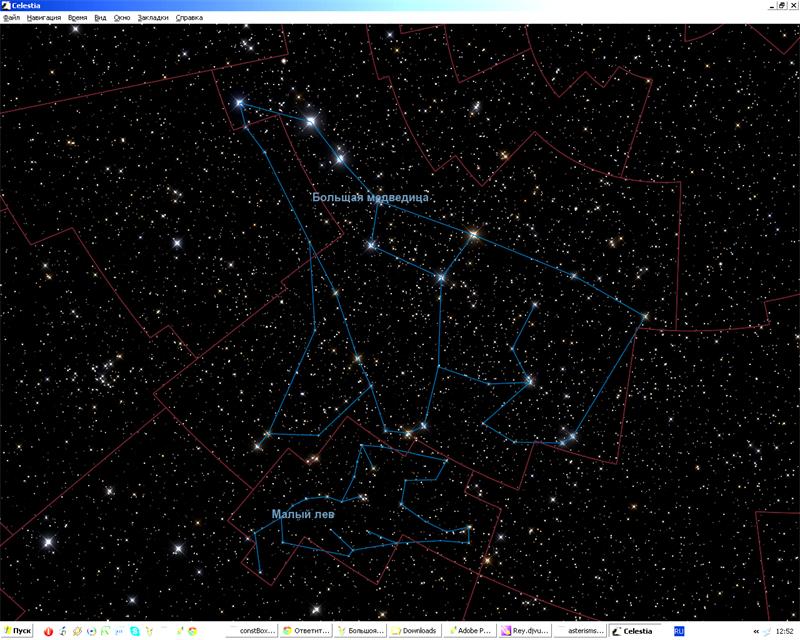
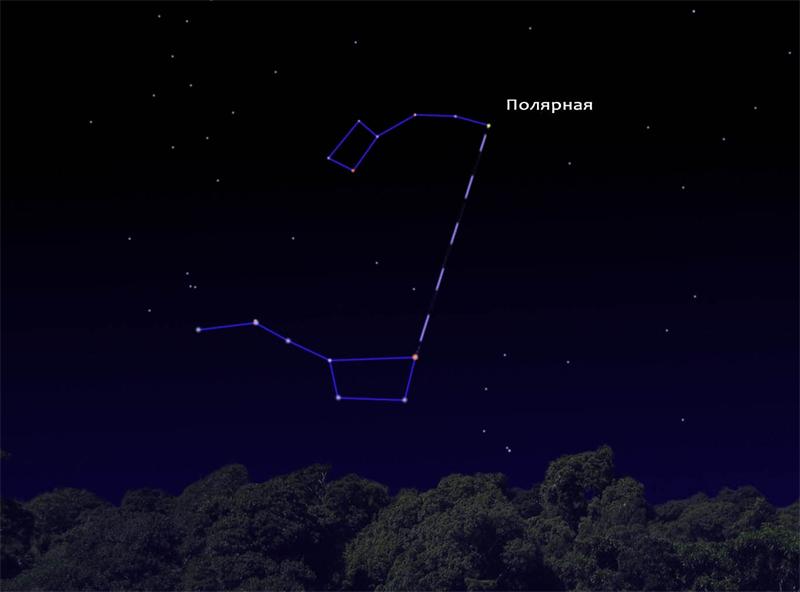
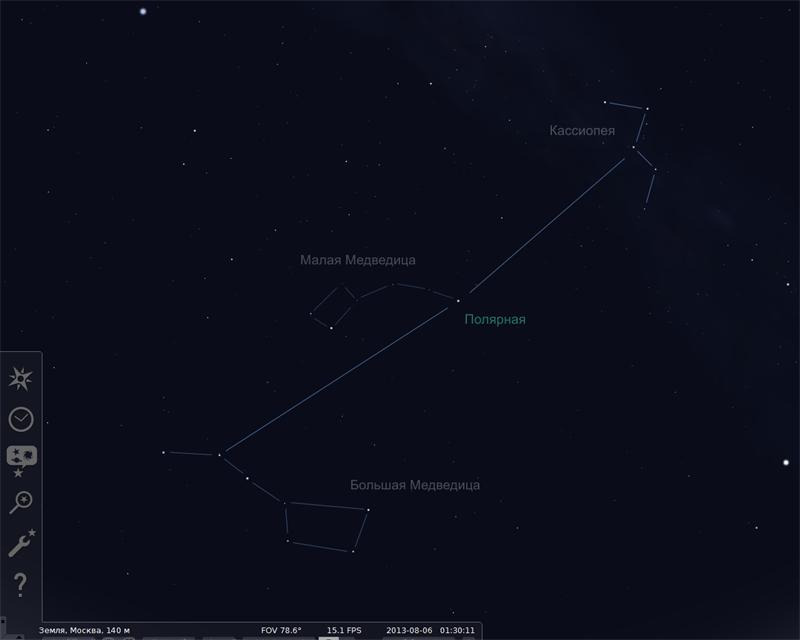
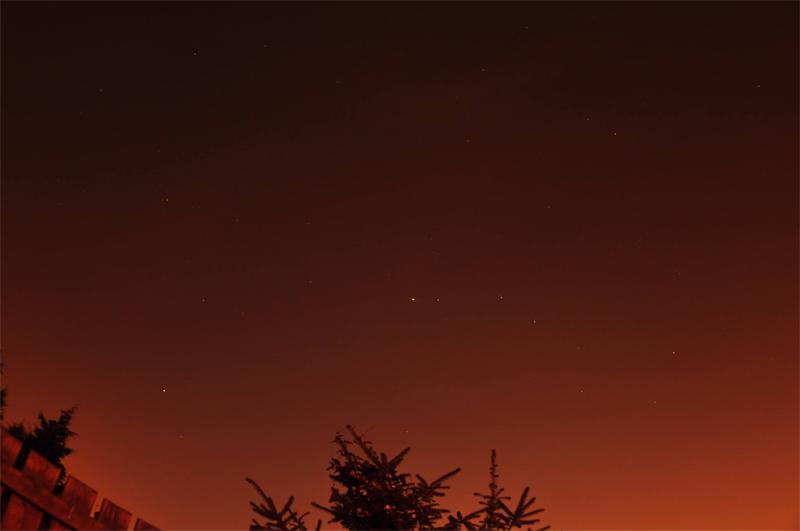
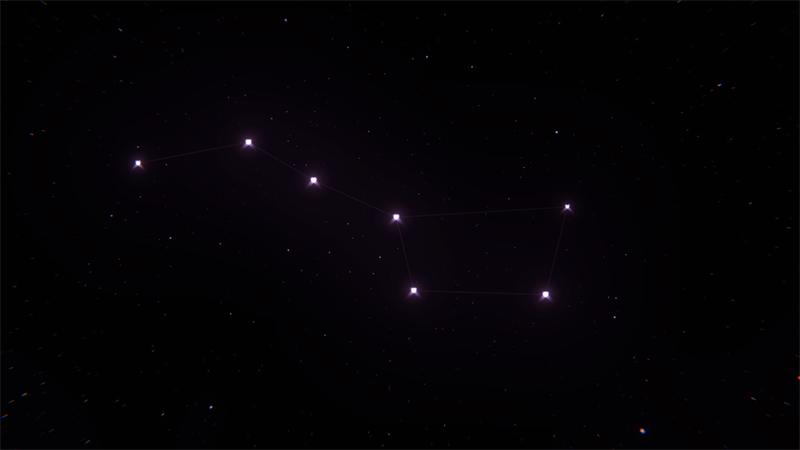
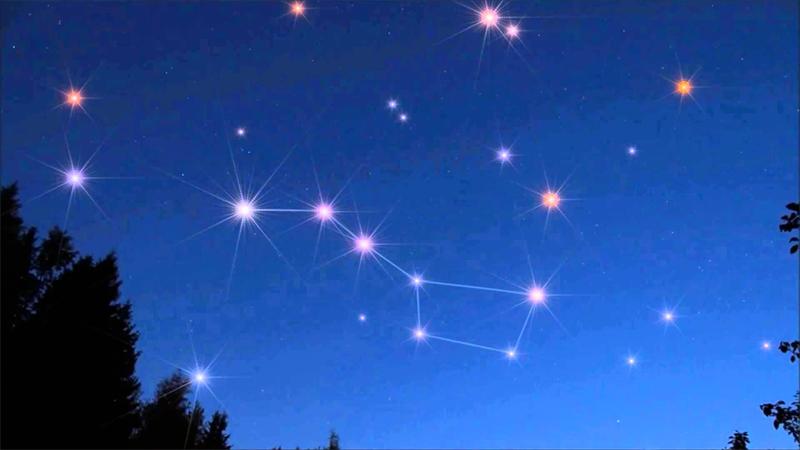
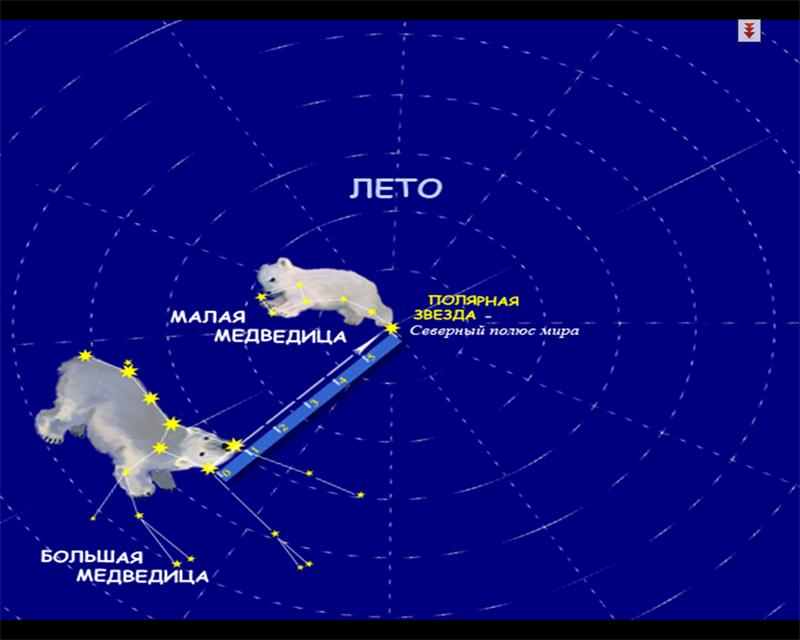
MYTHOLOGY
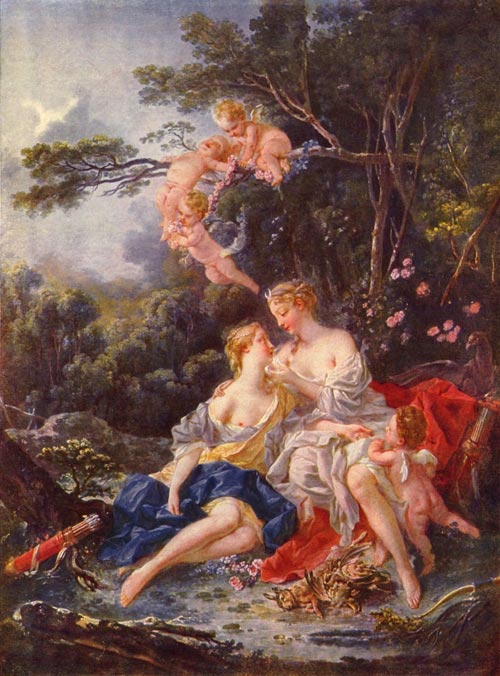 Callisto(Greek Καλλιστώ) - in Greek mythology, the Arcadian, the daughter of Lycaon, was among the companions of Artemis the huntress, was turned into a bear because she did not retain her virginity and gave birth to Arkad and Pan. According to another version, she was turned into a beast by Zeus, who tried to hide her from the jealousy of Hera.
Callisto(Greek Καλλιστώ) - in Greek mythology, the Arcadian, the daughter of Lycaon, was among the companions of Artemis the huntress, was turned into a bear because she did not retain her virginity and gave birth to Arkad and Pan. According to another version, she was turned into a beast by Zeus, who tried to hide her from the jealousy of Hera.
When Arkad, who did not know her and was brought up by Maya or Hermes, wanted to kill her, Zeus transferred both to the sky in constellations: Callisto- Big Dipper, Arcade- Arktofilakom (Keeper of the bears, now) or the star Arcturus in this constellation. Hera, who pursued her with her anger, deprived her of the opportunity to refresh herself part of the day in the waves of the ocean; therefore the Big Dipper never sets.
In the picture - a painting - Francois Boucher "Callisto and Jupiter Zeus assumes the image of Artemis"
In Chinese astronomy, the seven bucket stars are called the Northern Dipper (Beidou). In ancient times, the ladle handle pointed almost to the pole and was used by the Chinese to keep time.
The constellations Ursa Major, and are associated with one myth, which even today excites us with the tragedy described in it. Long ago, King Lycaon ruled Arcadia. And he had a daughter, Callisto, known throughout the world for her charm and beauty. Even the ruler of Heaven and Earth, the Thunderer Zeus, admired her divine beauty as soon as he saw her. Secretly from his jealous wife - the great goddess Hera - Zeus constantly visited Callisto in her father's palace. From him she gave birth to a son Arkad, who quickly grew up. Slender and handsome, he skillfully shot from a bow and often went hunting in the forest. Hera learned about the love of Zeus and Callisto. Falling into a rage, she turned Callisto into an ugly bear. When Arkad returned from hunting in the evening, he saw a bear in the house. Not knowing that this was his own mother, he pulled the bow string ... But Zeus did not allow Arkad, although unwittingly, to commit such a grave crime. Even before Arkad fired an arrow, Zeus grabbed the bear by the tail and quickly soared with her into the sky, where he left her in the form of the constellation Ursa Major. But while Zeus was carrying the bear, her tail began to lengthen, which is why the Big Dipper has such a long and curved tail in the sky. Knowing how much Callisto was attached to her maid, Zeus lifted her up to heaven and left her there in the form of a small, but beautiful constellation. Zeus and Arcada moved to the sky and turned into a constellation. forever doomed to protect his mother, the Big Dipper.19 Therefore, he firmly holds the leashes of the Hounds of the Dogs, which bristled with rage and are ready to pounce on the Big Dipper and tear it apart.
There is another version of this myth. The eternally young goddess Artemis, dressed in hunting clothes, with a bow, a quiver and a sharp spear, wandered through the mountains and forests for a long time in search of good game. Following her, her companions and maids moved, resounding with laughter and songs. Mountain peaks. The girls were one more beautiful than the other, but the most charming was Callisto. When Zeus saw her, he admired her youth and beauty. But the servants of Artemis were forbidden to marry. To master it, Zeus went to the trick. One night, in the form of Artemis, he appeared before Callisto... From Zeus, Callisto gave birth to a son, Arkad, who quickly grew up and became an unsurpassed hunter. The jealous wife of Zeus Hera, who learned about her husband's love affair, unleashed her anger on Callisto, turning her into an ugly clumsy bear. One day, the son of Callisto Arkad was wandering through the forest, and suddenly a bear came out of the bushes to meet him. Not knowing that it was his mother, he pulled the string, and the arrow flew into the bear ... But Zeus, who vigilantly guarded his beloved Callisto, last moment took the arrow away, and it flew past. At the same time, Zeus turned Arcade into a little bear cub. After that, he grabbed the bear with the cub by the tails and carried them to the sky. There he left Callisto to shine in the form of the beautiful constellation Ursa Major, and Arcada - in the form of the constellation. In the sky, in the form of the constellations Callisto and Arkad, they became even more beautiful than on Earth. Not only people admired them, but Zeus himself. From the top of Olympus, he often looked at the constellations Big and enjoyed their beauty and continuous movement across the sky. Hera was unpleasant when she saw her husband admiring his pets. She turned with an ardent prayer to the sea god Poseidon so that he would never allow the Big Dipper to touch the sea. Let her die of thirst! But Poseidon did not heed the pleas of Hera. Could he really let the beloved of his brother, Zeus the Thunderer, die of thirst?! The Big Dipper continues to circle around the Pole, while once a day it descends low over the northern side of the horizon, touches the sea surface, quenches its thirst and then rises again, attracting the eyes of people and gods with its beauty.
Interesting Facts
The constellation Ursa Major is depicted on the flag of Alaska.
 The flag of Alaska (eng. Flag of alaska) is one of the symbols of the US state of Alaska.
The flag of Alaska (eng. Flag of alaska) is one of the symbols of the US state of Alaska.
The flag was designed in 1926 by 13-year-old Alaska Native Benny Benson, and in 1927 adopted as the official symbol of the Territory of Alaska, which became a state on January 3, 1959.
Eight gold (yellow) five-pointed stars are depicted on a blue background: seven in the image of the Big Dipper and the North Star in the upper right corner.
The Big Dipper symbolizes power, and the North Star - the north (Alaska is the northernmost territory of the United States).
Source: http://ru.wikipedia.org/wiki/Ursa Major_(constellation)








